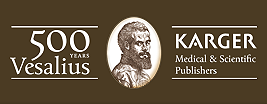
e humani corporis fabrica is undoubtedly one of the most influential books ever published. Historians will always be interested in the various aspects of its background, content, and impact. But what can today's medical students and doctors learn from Vesalius?
By Hubert Steinke
Traditional medical history
Until the 1960s, medical history was largely concerned with "doctors and discoveries". Rooted in our current conception of science, historians identified precursors of our way of thinking and described a linear progression from traditional beliefs towards our modern ideals for which some exceptional scientists had to struggle against but ultimately prevailed. The mission of this kind of historiography was to serve as a support and confirmation of the beliefs and goals of modern medical science.
Modern medical history
Today, we try not to look at past events from our present perspective, but understand them on the basis of their historical context and value. This enables us to more accurately recognize how a discovery was made, why and how it met with opposition and, eventually, why and how discoveries in general are made and sometimes opposed. The general idea is thus to understand how science and medicine has worked and works. Based on this, we can enter into a dialogue with medical students and doctors about the general and fundamental questions of their profession.
Why Vesalius?
Vesalius’ Fabrica is one of the most important books in the history of medicine as it fostered a radical shift in anatomical and medical thinking. Because it marks a decisive point in the evolution of modern medicine and science, it is particularly suited as a starting point to discuss various important questions, including but not limited to: How and why do paradigmatic shifts happen? How do different representatives of the medical profession react to new and controversial knowledge? What are the general characteristics of modern science? To what extent should anatomy be a central discipline of medicine? In which way are we still rooted in the Renaissance train of thought?
Why the ‘New Fabrica’?
The ‘New Fabrica’ is the ideal means to address these issues. Thanks to the incorporation of the 1543 and 1555 editions, as well as Vesalius' later annotations, we can follow the development of his thoughts and findings. The annotations reveal which aspects of traditional knowledge he accepted and which ones he rejected. The fresh and modern translation makes Vesalius’ thoughts accessible to a larger audience. Also, the innovative design provides the reader with an improved readability of both text and illustrations. Medical students and doctors will see that studying Vesalius is not only an intellectual but also a sensory experience.
